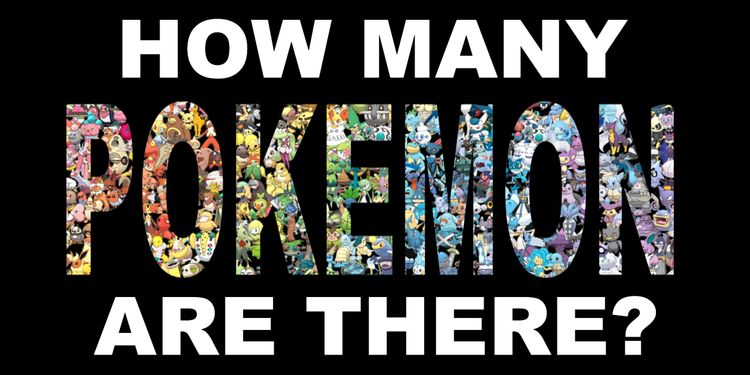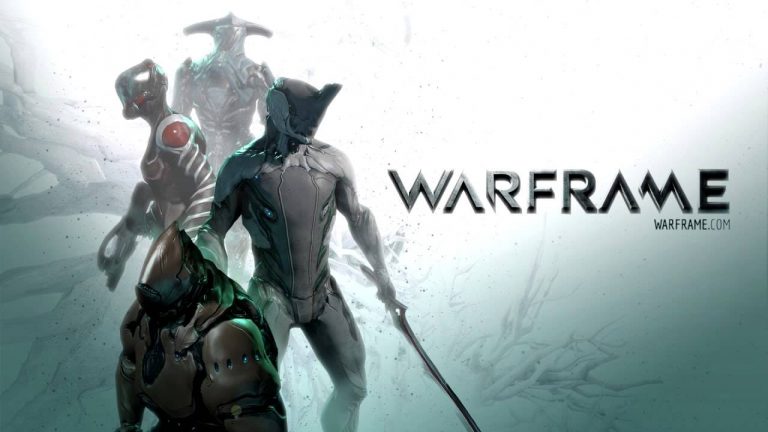How Many Pokemon Are There? A Full Analysis And Breakdown

To an outsider, the question “How many Pokemon are there?” seems like it should be a simple one. However, those who have spent enough time with Pokemon games, anime, manga, trading cards, and any other element of the franchise might know that it’s a bit more complicated, depending on how you want to answer the question. If you want to talk about how many Pokemon designs exist — for example, Kantonian Vulpix versus Alolan Vulpix — the answer is much different.
The official total at the time of writing, with the release of the Crown Tundra DLC for Sword & Shield, is 898. Calyrex is the most recently added, coming in at #898 in the National Pokedex. Additionally, footage of Pokemon Legends: Arceus has shown three new Pokemon: Wyrdeer, Basculegion, and Kleavor, bringing the total to 901 (at least) once that game releases.
However, many Pokemon have different forms, regional variants, Mega Evolutions, Gigantamax forms, fusions, and more. These don’t technically count as different Pokemon, but they can often function as such. One final caveat is that not every Pokemon is available in every game, so depending on which game you’re playing (and when!), the total will be a different number.
We’ve broken down the answers to this question in as many ways as we could think of, outlining how many Pokemon there are in each current-generation game, as well as more generally over the history of the series.
Total: A Complete National Pokedex, as of Generation VIII
> National Pokedex
If we just look at the total number of Pokemon in the National Pokedex, the answer to the question “How many Pokemon are there?” is easy: 898.
With the reveal of Wyrdeer and Basculegion in Pokemon Legends: Arceus, the number rounds off to a nice, neat, 900. Not long after their reveal, Kleavor ruined that nice roundness and brought the total to 901. However, it’s unlikely that these will be the only new Pokemon in the game. We’ve also seen Hisuian forms, but for the sake of this portion of the article, those are regional variants, not new Pokemon.
Generational Breakdown
So, of those 898 Pokemon that make up the National Pokedex, how do they distribute across the generations? Most Pokemon fans know that there were 151 in Generation I, but you might not know about the generations past that.
Generation V is actually the biggest, introducing 156 new Pokemon, while Gen VI is the smallest, only introducing 72.
Here’s the distribution:
| Kanto | 151 | Unova | 156 | |
| Johto | 100 | Kalos | 72 | |
| Hoenn | 135 | Alola | 88 | |
| Sinnoh | 107 | Galar | 89 |
Special Categories
We’ve taken a look at the different ways to count the total number of Pokemon. Now, let’s look at some special categories, just to be thorough and look at some of the various ways that Pokemon are categorized.
Legendary Pokemon
Many Legendary Pokemon have been introduced over the years. Some generations only have a few, while others introduce a ton. There is some debate over whether Mythical Pokemon are considered Legendaries, but given that the Pokemon Company makes a distinction, this article will as well. Both Mythical and Ultra Beasts are their own section.
As for Legendaries, here’s a full list, separated by generation:
| Kanto | Johto | Hoenn | Sinnoh |
|
|
|
|
| Unova | Kalos | Alola | Galar |
|
|
|
|
Mythical Pokemon
Mythical Pokemon were once considered to be Legendary Pokemon (at least in the west — Japanese media has always differentiated them), but in recent years, a harsher distinction has been made between the two groups.
There are far fewer Mythical Pokemon than Legendaries, and they are much more mysterious. Where Legendary Pokemon are “famous” (or infamous) in a sense, Mythical are often elusive and many people are unsure of whether they even exist.
In the games, Mythical Pokemon are almost always given as an event gift, whereas Legendaries are often encountered as part of the story. Here’s a full list:
| Kanto | Johto | Hoenn | Sinnoh |
|
|
|
|
| Unova | Kalos | Alola | Galar |
|
|
|
|
Ultra Beasts
There is a bit of a discrepancy as to whether Ultra Beasts are Legendary Pokemon are not. The simplest answer is… “kind of?” They are extradimensional beings that have many Legendary qualities but are not technically considered Legendaries.
In the Gen VII games, Ultra Beasts are filtered out when searching the Global Trade System if you filter out “Mythical or Legendary Pokemon.” Meanwhile, this is not the case in Generation VIII. But, in the Crown Tundra DLC, Peony refers to them as “legendary” with a lowercase-l, and they can be encountered via the “Legendary Clue.”
Whether or not you want to consider them Legendary Pokemon, they are a distinctly separate group from the average Pokemon. There are only 11 of them, all introduced in Generation VII:
- Nihilego
- Buzzwole
- Pheromosa
- Xurkitree
- Celesteela
- Kartana
- Guzzlord
- Poipole
- Naganadel
- Stakataka
- Blacephalon
Total: A Complete Pokedex, With Forms
So, if we really want to count how many total Pokemon there are in terms of how many Pokemon have been created, we’ll have to consider different variants, Mega Evolutions, and more.
> Mega Evolution?
There are a few things that can complicate the answer to this question, though. Mega Evolutions are an enhanced version of a Pokemon and not technically a new one, but they are treated as such in many ways.
They look different, have different stats, often have different types and abilities, and are sometimes spoken of like they are their own species (example: Red says his Charizard “evolved even further!” in Origins).
However, the change is only temporary and (mostly) only occurs within battle.
> Regional Variants?
Another wrinkle is regional variants. While Kantonian and Galarian Meowth are both Meowth, they are different, have different types and appearances, and evolve into different.
But, Vivillon and Shellos both have different forms based on where they are caught (Vivillon in the real world, Shellos in the in-game world), and these forms don’t count as regional variants (just design differences).
> Purely Cosmetic Forms?
Speaking of appearance changes — some Pokemon just look different based on various factors.
We’ve mentioned Vivillon, but its Gen VI friend Florges is another example, with different colors based on what flower its pre-evolution, Flabébé, formed an attachment with. Do these different forms that have no function beyond appearance make for a different Pokemon? Probably not, but it’s something to consider.
> Temporary or Fixed Form Changes?
Some forms do more than just change appearance, with some being temporary for the course of a single battle and some being more substantial. While Meloetta can swap between its Aria and Pirouette forms in battle, the transformation is temporary and it will also revert to Aria after the battle ends. While they’re both Meloetta, they are “different Pokemon” in the sense of counting how many different Pokemon designs have been made.
On the other hand, a Pokemon like Calyrex can fuse with Glastrier or Spectrier to make Ice Rider Calyrex or Shadow Rider Spectrier, respectively. Surely these don’t count as separate , but the steed effectively ceases to exist as its own entity, and the transformation lasts outside of battle as well.
Let’s say you have two at your party: Calyrex and Glastrier. You fuse Calyrex and Glastrier into Ice Rider Calyrex. Now, you only have one at your party. But, Glastrier hasn’t been removed from existence in terms of how many Pokemon there are overall.
> Evolutionary Changes?
There are some Pokemon that have a branched evolution into… the same Pokemon.
For example, Kubfu will evolve into Urshifu, but Urshifu has two different forms and cannot swap between them. You can evolve your Kubfu into Rapid-Strike Style Urshifu, which is a Water/Fighting-type, or you can evolve it into the Dark/Fighting-type Single-Strike Style Urshifu. They are fundamentally different, but the “same”. They even have different Gigantamax forms, whereas other multiple-form do not, like Toxtricity or Alcremie.
> Gigantamax?
On the topic of Gigantamax, it poses another problem. If we’re counting how many different designs there are, and we count Mega Evolution, then surely Gigantamax forms should count as well, right? But, they’re different in many ways.
Mega Evolved Pokemon gain the “Mega” moniker, like Mega Gardevoir versus just Gardevoir. Gigantamax Pokemon do not receive a new name, nor do their types or abilities change. They do gain more HP, though.
> Other Questions
There are some other Pokemon that pose problems for a simple answer to this question. We haven’t listed every one of them here, but we have listed some examples.
Unown: This Psychic-type comes in 28 forms, one for each letter of the Latin alphabet and two that are punctuation marks. They don’t really have discernable differences beyond their appearance. However, the question mark and exclamation point Unown have different Performance stats in the Pokeathlon, for some reason.
Functionally different form changes: Some have significantly different characteristics based on which form they are currently in. Deoxys, for example, has four different forms: Normal, Attack, Defense, and Speed. Not only do they have different appearances and stats, but they learn different moves as they level up as well. Zygarde will have a completely different appearance and base stat total based on how “built” it is, with each form having a literal percentage: 10% Zygarde, 50% Zygarde, and Complete Zygarde.
Ash-Greninja: While not a Mega Evolution, it basically is. When Greninja has the ability Battle Bond, it can turn into Ash-Greninja, with a different appearance and base stats.
The Article: Copy Here
